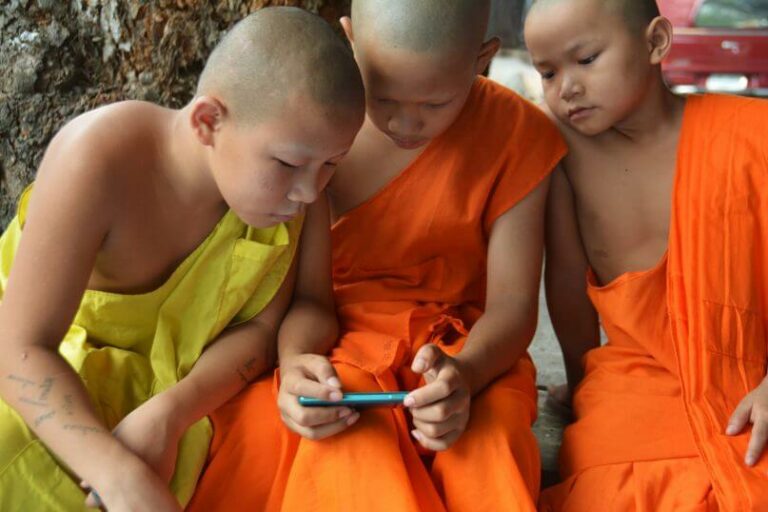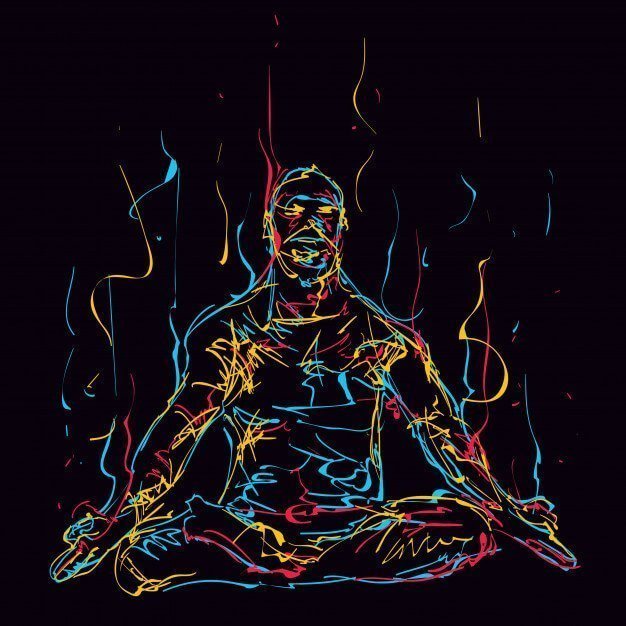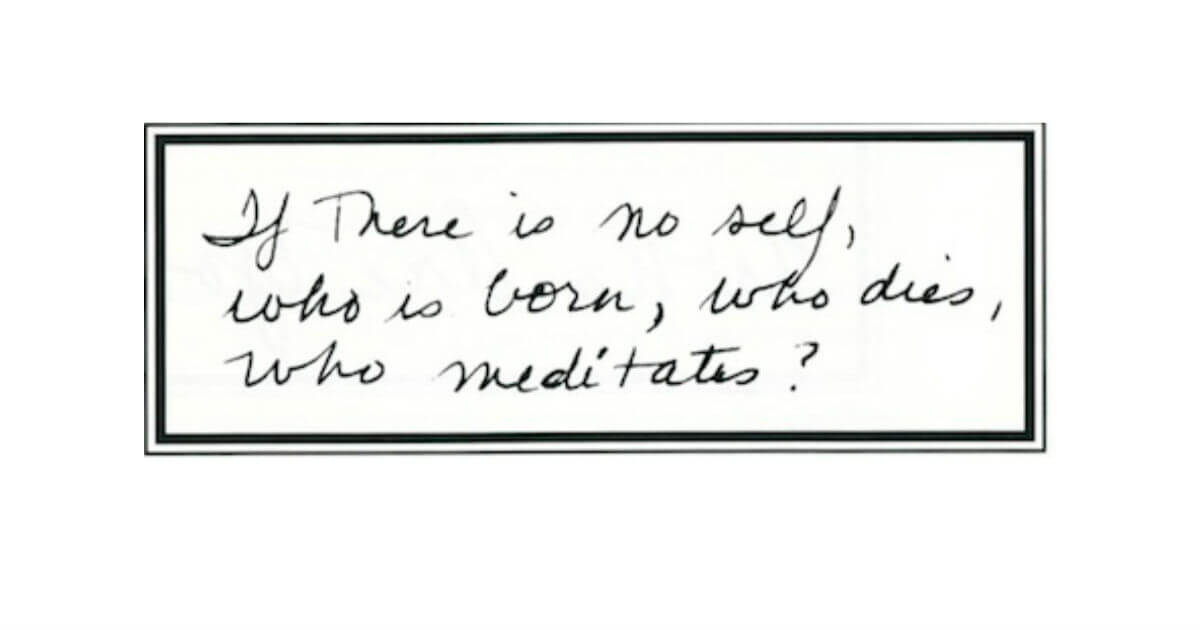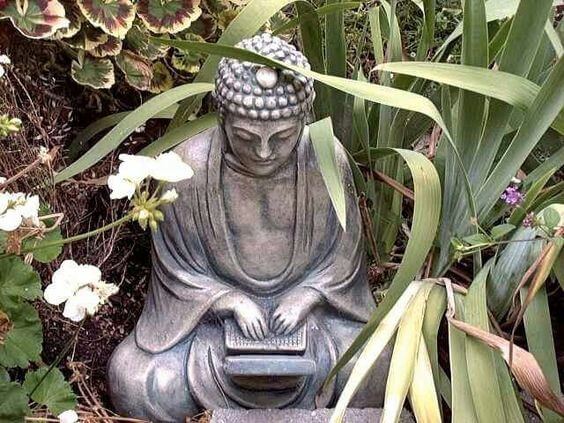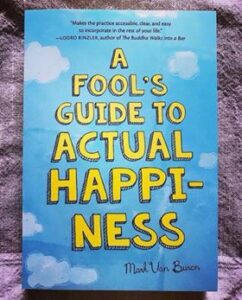1
One of the central tenets of most Buddhist doctrines is the notion that, when it comes down to it, there is no such thing as the finite, individual “self.”
When I refer to myself as “I”, this subject to which I reflexively refer is really in some sense illusory, and the same is true of any other finite subject or object out there in existence. Each thing that exists, exists only in the sense that it is coordinated with, or relative to, all the other things that exist. As such, the supposed dividing lines that distinguish one thing from another — the tree from the stone, the land from the sea, yourself from me — are ultimately unreal, or at most very tentative.
If entities are relative,
They have no real existence.
The [formula] ‘this being, that appear’
Then loses every meaning.
(From the Madyamika-sastra, or Treatise on the Middle Doctrine, by Nagarjuna, c. 150-250 CE)
As such, among the principal purposes of meditation, one could say its metaphysical function, is to actualize this notion in one’s consciousness — to actually allow one’s own sense of finite consciousness to dissolve into the sprawling, impermanent interconnections of the All.
Like many others, when I meditate, whether or not I get anywhere remotely resembling such a state of blissful nonentity, my session is terminated by the familiar, piercing beep of an alarm on my iPhone. It’s the same sound that wakes me up in the morning, and here it reprises its role of beckoning me, vexingly, back into the realm of consciousness, as each digital tone registers me anew in the regime of Self — the bell tolls for me.
Sometimes this is a welcome interruption, especially if my meditation on that occasion has been, as it sometimes is, a difficult one — for sometimes in that duration of quietude, one doesn’t dissolve the self at all, but inundates oneself with thought after thought, image after image; sometimes all you manage do when meditating is think even more about what’s really bothering you, or that for which you’re yearning.
In my case, my objects of bother and yearning inevitably have to do with the very device that rouses me from my potential quiescence. I’m a musical artist and content creator, and so an immensity of my time is devoted to circulating and promoting my creations — and my very self — on my phone. This is doubtless true of many meditators, at least modern Western millennial ones.
We may even use mediation apps that facilitate, perhaps very effectively, our goals of temporary transcendence — but often that process is mediated by a device that’s undeniably dedicated to the cultivation of the finite, individual “I”. For Apple users, it’s right there in the title — ending your mediation with your phone alarm really puts the “I” in “iPhone”.
In what way does one’s phone, or more specifically and distinctly, one’s social media presence, reinforce and further reify the self, the self that is supposed by so many spiritualites and philosophies to be an illusion? And does that make the phone, and/or social media, an impediment to our most spiritual, philosophical, self-transcendent impulses?
On a certain immediate level of analysis, the answer would seem to be an undeniable yes. The evidence and testimonials of phone addiction, and social media addiction and anxiety, are increasingly abundant [viz. The Social Dilemma] — but perhaps few of us have any reason to consult such evidence, because the problem is already abundantly clear within the confines of our own individual experiences.
Increasingly it feels that in order for something to be real, it must be documented — photographed or filmed — and shared. The digital inscription of our experience has begun to efface our lived experience; the subject is about the documentary, rather than the other way around. It is emotionally uncomfortable to let a moment of significance “just happen” without encoding it into the great centerless library of the interwoven platforms. We yearn to be uploaded, to unburden the load of our own anonymity.
As this happens, as we post representations of ourselves, the finite self is refracted outward, reproduction by reproduction, screen by screen. We see ourselves multiplied and recurrent, appearing on our own feeds, and take solace and a sense of certainty from the knowledge that our visage, our expressions, appear also on the feeds of others. But meanwhile the anxiety that they are not appearing there enough gnaws at our hearts, because we feel, when we are not being seen on screens, that we are receding from reality.
Returning to the Buddhist view of the self as having no reality, the self being a kind of neurotic clinging to the passage of matter and time, the stubborn binding of an ever-dissipating illusion — returning to this view of the self, it seems that social media is perfectly constructed to exacerbate the self-illusion.
Have you ever posted a picture or video of yourself, or some other self-validating expression, and gone back time and time again over the course of the day to gaze upon it afresh?
I sometimes find myself literally refreshing the page, repeatedly. — This is to get it more ‘views’, more iterations in the algorithmic dance of its dissemination; but it’s also to literally refresh the self — to see my image, the production-in-data that I am, born again freshly into the world of information, the world of sense.
Like a child on the receiving end of a game of peek-a-boo, terrified to see the parent disappear, and then flooded with surprised delight to find them once again revealed, we ecstatically refresh the pages of our posts, desperate to see ourselves revealed as a “real thing” yet again — infants playing peek-a-boo in the mirrors of their own devices.
The internet is a hall of mirrors, multiplying you in such a way that it becomes more and more difficult to remember that you are not you in the first place. Every picture is a selfie; for it is only by convention, or by a degree of illusion, that we appear distinct. This is the trick of the supposedly “documentary” aspect of social media — what it documents is precisely the fiction of self that it perpetuates, a registry of masks. Screens, like mirrors, separate us from what’s on the other side of them — and what faces them.
2
But as you’re reading this, you may be feeling that my appraisal is unjustly, and suspiciously, negative. In fact, you may be getting the vibe that I’m a hater-moralizer against social media et al. for what are ultimately very personal reasons — to wit, my own failures so far to succeed in its discourse to the degree that I may wish.
You wouldn’t be wrong; my anxiety abounds. Though that doesn’t necessarily invalidate the analysis. An ascetic who rejects the world may do so for reasons that are initially petty, but this does not mean that there aren’t also very legitimate, and related, justifications for that rejection — such that their asceticism is, in the end, a legitimate gesture.
I however am not an ascetic; nor am I planning to deactivate all my social media accounts after writing this — if I did, significantly fewer people would ever end up reading it. And even if that were sincerely no concern of mine, there may be compelling reasons to cast the spectre of social media in a somewhat different light than I have so far, vis-à-vis the goal of self-transcendence and actualization of the ultimate.
My thesis has been that social media spuriously multiplies the self. But is it really a problem to multiply the self, if one’s goal is to realize that the self is somehow fictive, contingent and relative?
If I look upon my various accounts and posts, and those of others, as a vast accumulation of selfhoods, does not their very multiplicity, their very abundance, make it even easier for me to recognize that they don’t matter? Can so many self-posts ultimately make us post-self?
I may get bogged down by the internet’s abundance. I may, driven by my lofty transcendental goals, feel that the vast array of platforms, accounts, and selves-that-are-brands assail me, like ever-intensifying game of spiritual whack-a-mole, where one is constantly fending off one’s own spurious self-manifestations, and their even more spurious refractions in the reposts of others.
But that would be a very negative way to look at it — indeed, that would be the way of fear. For way out of the maze of self-hood may not be to destroy or delete manifestations of self every time they appear — that would be an endless task — but simply to greet them as they pass, and peacefully let them go.
If you try to smash your way out of the hall of mirrors, you’ll only find more behind the ones you’ve smashed — and you’ll still see yourself in the fragments of glass. The more elegant course is to see how you can transmute its reflections from objects of self-imprisonment, to objects of inspiration — visions of self that don’t encumber you, but remind you by virtue of their very multiplicity that you are not a solitary one, but many and free.
For the greatest virtue of social media may indeed be its very plurality and transience, and the ultimate anonymity that results from its incalculable abundance. What market of self-expression before it has ever so utterly effaced the selfoods that it ostensibly perpetuates? Content creators, as often as not, receive no credit for their creations, because if their creations succeed, they are reproduced and re-disseminated to such a degree that their ownership of them is no longer quite so meaningful, no longer as actual, no longer relevant.
Creations that go viral have a tendency, more than other creations earlier in the modern world, to transcend the identity of their creators — and is that not the point of creating something in the first place? And is not the point of being a creation to realize you’re beginningless, endless and authorless? Or rather that the Power that made you is so vast and so plural that it cannot be known, let alone be tagged?
In this way there is an opportunity, in the mechanics of the information age, for “Western” thought to get over its obsession with finite individuality, compelled to do so by witnessing the irreversible inflation of the currency of self. A picture is no longer worth a thousand words; nor is it needful to pay in words what may be rendered in emojis. 💥🤯💫.
In other words, the proliferation of self in social media is only a problem if there is already a more fundamental problem with the self.
This is the more disturbing thought, that lurks beneath our impulse to roll our eyes at, or even despise, the self-branding and self-promotion that run rampant in our digital lives: the thing that we are really disturbed by when the algorithm shows us what it shows us — is ourselves.
The worlds-of-illusion curated and reproduced for us by our social media platforms are not principally upsetting because of their invasion of our privacy, but because they reveal to us precisely what we are — processes of fleeting desires and arbitrary choices, chance seductions and casual clicks, that form the substance of our lived experience. And our anxiety to propel and reduplicate our own visages in that same experiential matrix, our desire to see and be seen, is in part paradoxically motivated by the fact that some part of us despises what we are, and seeks to put new masks on the masks we have already become.
Simply put, if I am concerned or disappointed with how a posted picture of myself “does”, then perhaps the underlying reason for it is that I’m in some sense disappointed with who “I” am. And the cause of the discontentment is that I’m obsessively clinging to precisely that portion of my share of being that is the least real — the part that can be reproduced.
3
Not surprisingly, the truest thing to say is probably that as far as self-transcendence goes, social media is neither good nor bad. Even the Dalai Lama has an instagram account, but one doesn’t have to follow it to follow him.
Spiritualistic railing against online sharing reinforces the misconception, that transcending the self is the same as getting rid of it, by hiding it away from the world, or by destroying it. Nothing can hide from the world, whether it’s posted on the internet or not — the very fabric of its being interpenetrates and is permeated by all that surrounds it.
Bits of one’s selfhood fleck off into the shimmering display of maya whether one likes it or not, publishes them or not, “goes live” or not. And all one could ever delete has already been etched on the endless scroll of the universe, whether or not one deigns to scroll it.
And so let my phone, with its inexhaustible contents, its incandescent barrage of comments and concepts, teach me to overcome my obsession with finitude, to overcome the very notion of definitive success.
For it is only when we seek to use it to accomplish something definitive, that is, the perpetuation and reproduction of a supposedly “definitive” version of ourselves, that we transform its liberatory function into a pernicious one, and become obsessed with its deception.
The typical justification offered on behalf of social media, with all its attendant ills and intrusions into peace and privacy, is that it connects us — the information age in general is characterized by the fact that it has “connected us as never before”. This is indeed the case, and it’s a valid justification, for we are social beings, whose powers of introspection and meditation are meaningless if they don’t have some reference to the communities in which we participate.
Hence I’m not arguing, on the basis of some higher or deeper truth, for an ascetic, retrogressive rejection of the technologies that allow us to project ourselves to one another from afar.
But it is essential that this outward, external connectivity be mirrored by an internal connectivity, wherein we reach boldly into our own depths, and find there an even more vivid self-reflection, and a more irresistible interconnection, than what we see when we open our eyes again and scroll through our phones. For there inside ourselves we see the pulse and throb that unites all matter in its fluctuant process of joining and separating, the constant activity of being, so abundant that it’s also a nothingness.
On our way there, the extraneous thoughts that may drift across our minds can only impede us if we choose to fixate upon them, as opposed to letting them pass through the grasp of our attention like sand in the wind. And so may we do when bombarded by the offerings of our feeds, the pixels that gather their dance on our screens: like them, love them, comment and post — but with each, let it be an embrace that is really a letting go, as our myriad self-reflections disappear into their manyness.

